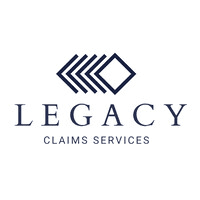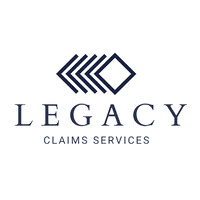Not sure if Goosehead Insurance Agency, LLC is right for you?
Talk to a Franchise Advisor who can match you with your perfect franchise based on your goals, experience, and investment range.
Talk to an Expert
Goosehead Insurance
How much does Goosehead Insurance cost?
Initial Investment Range
$66,000 to $108,500
Franchise Fee
$50,000 to $65,000
Goosehead Insurance Agency, LLC offers franchises for businesses that will offer various insurance products to customers, from a variety of insurance carriers.
Enjoy our partial free risk analysis below
Unlock the full risk analysis to access 9 more categories covering 100+ risks.
Goosehead Insurance April 1, 2025 FDD Risk Analysis
Free FDD Library AI Analysis Date: July 16, 2025
DISCLAIMER: Not Legal Advice - For Informational Purposes Only. Consult With Qualified Franchise Professionals.
Franchisor Stability Risks
Start HereDisclosure of Franchisor's Financial Instability
High Risk
Explanation
The franchisor, Goosehead Insurance Agency, LLC (Goosehead), explicitly identifies its "Financial Condition" as a "SPECIAL RISK" on page iv, stating it "calls into question the franchisor's ability to provide services and support to you." This direct warning of potential financial instability is a significant risk, as it may impact Goosehead's capacity to fulfill its obligations, invest in the brand, and support your business operations, despite the parent company's audited financials showing profitability.
Potential Mitigations
- An experienced franchise accountant should thoroughly review the parent company's audited financial statements, including all footnotes and the critical audit matter section.
- It is wise to discuss the specific 'Special Risk' warning with your financial advisor to understand its potential impact on your investment.
- Your attorney should ask the franchisor to provide context for this explicit warning and detail the steps being taken to ensure franchisee support.
High Franchisee Turnover
High Risk
Explanation
Item 20 data reveals a significant franchisee turnover rate. In 2024, a total of 220 franchised outlets exited the system (93 terminations and 127 ceased operations) from a starting base of 1,226. This represents an 18% annual churn rate. Such a high number of exits is a strong indicator of potential systemic problems, which could relate to franchisee profitability, satisfaction, or the viability of the business model itself, presenting a substantial risk to your investment.
Potential Mitigations
- Engaging a business advisor to analyze the Item 20 tables for trends over the last three years is critical to understanding the system's stability.
- Contacting a significant number of former franchisees from the list in Exhibit E-2 is crucial to understand why they left the system.
- Your accountant can help you model the financial impact of such a high turnover rate on the overall brand health and support structure.
Rapid System Growth
Low Risk
Explanation
This risk was not identified. The FDD's Item 20 data shows a net decrease in the number of franchised units over the past two years, indicating system shrinkage rather than rapid growth. However, managing growth is a key franchisor challenge. If a system expands too quickly, its ability to provide training, site selection, and operational support can be strained, potentially diminishing the value you receive for your royalty payments.
Potential Mitigations
- A business advisor can help you analyze the three-year trend in unit growth versus shrinkage presented in Item 20.
- Posing questions to current franchisees about the quality and timeliness of franchisor support during periods of growth is a valuable exercise.
- Your accountant should assess if the franchisor's financials reflect sufficient investment in support infrastructure to handle any future growth spurts.
New/Unproven Franchise System
Low Risk
Explanation
This risk was not identified. Goosehead began franchising in 2011 and has a significant number of operating units, indicating it is an established system rather than a new or unproven one. For any franchise, especially newer ones, it is important to assess the franchisor's track record, the maturity of its systems, and its brand recognition. Investing in an unproven system carries higher risks related to support, operational efficiency, and overall business viability.
Potential Mitigations
- With any franchise, it is prudent to have your business advisor help you research the franchisor's history and the experience of its management team.
- Your attorney should verify that the franchisor has met all legal requirements for selling franchises in your state.
- An accountant's review of the franchisor's financial statements can provide insight into the stability and maturity of the business.
Possible Fad Business
Low Risk
Explanation
The franchised business is an independent insurance agency. This is a well-established industry with consistent demand, not typically considered a fad. The business model relies on selling property, casualty, and other insurance products. However, any business model's long-term success depends on its ability to adapt to market changes, such as the rise of online insurance aggregators and shifting consumer buying habits. Your success will depend on the brand's continued relevance and value proposition.
Potential Mitigations
- A business advisor can help you research the long-term trends and competitive landscape in the independent insurance agency industry.
- Inquiring with the franchisor about their strategies for technological innovation and adapting to market changes is an important step.
- Speaking with long-tenured franchisees about the evolution of the business model can provide valuable historical context.
Inexperienced Management
Low Risk
Explanation
This risk was not identified. The executive team described in Item 2 includes co-founders with experience in the insurance and franchising business since 2003 and 2011, respectively. Other executives have been brought in from various external companies. Assessing management's direct experience in both the specific industry and in supporting a franchise network is crucial, as inexperience can lead to poor strategic decisions and inadequate support for franchisees.
Potential Mitigations
- A thorough review of the management team's biographies in Item 2 with your business advisor is a recommended step.
- Asking current franchisees about their direct experiences with the management team's competence and support is crucial for due diligence.
- Your attorney can help you investigate the public track record of key executives if there are any concerns.
Private Equity Ownership
Low Risk
Explanation
This risk was not identified. While Goosehead is a subsidiary of a publicly traded company, Goosehead Insurance, Inc. (GSHD), it is not owned by a private equity firm. Private equity ownership can sometimes lead to a focus on short-term returns, which may not always align with the long-term health of franchisees. This can manifest as increased fees, reduced support, or a quick resale of the franchise system, creating uncertainty for your investment.
Potential Mitigations
- Your attorney can help you understand the implications of the franchisor's corporate structure, as detailed in Item 1.
- It is wise to ask your business advisor to research the ownership history of any franchise you are considering.
- Discussing any ownership changes with existing franchisees can reveal potential impacts on the system's culture and support.
Non-Disclosure of Parent Company
Low Risk
Explanation
This risk was not identified. Item 1 clearly discloses a multi-layered parent company structure, culminating in the publicly traded parent, Goosehead Insurance, Inc. (GSHD). The FDD includes the parent company's audited financial statements in Item 21 and a formal Guarantee of Performance from the parent in Exhibit F-2. This level of disclosure provides significant transparency into the financial backing and ultimate responsibility for the franchisor's obligations.
Potential Mitigations
- Your attorney should review the parent company guarantee to confirm its strength and enforceability.
- It is important for your accountant to analyze the parent company's financial statements, as they reflect the ultimate financial health backing the system.
- A business advisor can help you understand the operational relationship between the franchisor entity and its parent.
Predecessor History Issues
Low Risk
Explanation
This risk was not identified. Goosehead discloses in Item 1 that it does not have any predecessors. When a franchisor acquires a business and converts it into a franchise system, it's important that the history of that predecessor business is fully disclosed. This includes any past litigation, bankruptcy, or franchisee performance issues, which could indicate underlying problems that might persist under the new franchisor's ownership. A clean slate with no predecessors simplifies this aspect of due diligence.
Potential Mitigations
- Your attorney can verify the franchisor's corporate history and confirm the absence of any undisclosed predecessors.
- When evaluating any franchise, asking long-tenured employees or franchisees about the system's history is a good due diligence practice.
- A business advisor can help you research the origins of the brand and its business model.
Pattern of Litigation
High Risk
Explanation
Item 3 discloses a significant pattern of litigation. In the last fiscal year, Goosehead initiated 10 lawsuits against former franchisees to collect unpaid fees. This high number suggests that disputes over finances at termination are common and that the relationship can become adversarial. Additionally, there are pending lawsuits involving claims and counterclaims of wrongful termination and breach of contract. This legal history indicates a potentially contentious environment for franchisees who may fall behind or wish to exit.
Potential Mitigations
- A thorough review of the details of all litigation disclosed in Item 3 with your franchise attorney is essential.
- Your attorney can advise on the potential implications of this litigation history on your own relationship with the franchisor.
- It is critical to discuss the franchisee-franchisor relationship with a broad range of current and former franchisees.
Disclosure & Representation Risks
Example Risk: Franchisee Financial Obligations
Blue Risk
Explanation
This risk involves the financial obligations that a franchisee must meet, including initial fees, ongoing royalties, and other required payments. Understanding these obligations is crucial for long-term success.
Potential Mitigations
- Carefully review the Franchise Disclosure Document (FDD) and consult with a franchise attorney to fully understand all financial commitments before signing.
- Conduct regular risk assessments
- Implement monitoring and reporting systems
Unlock Full Risk Analysis
Purchase the complete risk review to see all 102 risks across all 10 categories.
Financial & Fee Risks
Example Risk: Franchisee Financial Obligations
Blue Risk
Explanation
This risk involves the financial obligations that a franchisee must meet, including initial fees, ongoing royalties, and other required payments. Understanding these obligations is crucial for long-term success.
Potential Mitigations
- Carefully review the Franchise Disclosure Document (FDD) and consult with a franchise attorney to fully understand all financial commitments before signing.
- Conduct regular risk assessments
- Implement monitoring and reporting systems
Unlock Full Risk Analysis
Purchase the complete risk review to see all 102 risks across all 10 categories.
Legal & Contract Risks
Example Risk: Franchisee Financial Obligations
Blue Risk
Explanation
This risk involves the financial obligations that a franchisee must meet, including initial fees, ongoing royalties, and other required payments. Understanding these obligations is crucial for long-term success.
Potential Mitigations
- Carefully review the Franchise Disclosure Document (FDD) and consult with a franchise attorney to fully understand all financial commitments before signing.
- Conduct regular risk assessments
- Implement monitoring and reporting systems
Unlock Full Risk Analysis
Purchase the complete risk review to see all 102 risks across all 10 categories.
Territory & Competition Risks
Example Risk: Franchisee Financial Obligations
Blue Risk
Explanation
This risk involves the financial obligations that a franchisee must meet, including initial fees, ongoing royalties, and other required payments. Understanding these obligations is crucial for long-term success.
Potential Mitigations
- Carefully review the Franchise Disclosure Document (FDD) and consult with a franchise attorney to fully understand all financial commitments before signing.
- Conduct regular risk assessments
- Implement monitoring and reporting systems
Unlock Full Risk Analysis
Purchase the complete risk review to see all 102 risks across all 10 categories.
Regulatory & Compliance Risks
Example Risk: Franchisee Financial Obligations
Blue Risk
Explanation
This risk involves the financial obligations that a franchisee must meet, including initial fees, ongoing royalties, and other required payments. Understanding these obligations is crucial for long-term success.
Potential Mitigations
- Carefully review the Franchise Disclosure Document (FDD) and consult with a franchise attorney to fully understand all financial commitments before signing.
- Conduct regular risk assessments
- Implement monitoring and reporting systems
Unlock Full Risk Analysis
Purchase the complete risk review to see all 102 risks across all 10 categories.
Franchisor Support Risks
Example Risk: Franchisee Financial Obligations
Blue Risk
Explanation
This risk involves the financial obligations that a franchisee must meet, including initial fees, ongoing royalties, and other required payments. Understanding these obligations is crucial for long-term success.
Potential Mitigations
- Carefully review the Franchise Disclosure Document (FDD) and consult with a franchise attorney to fully understand all financial commitments before signing.
- Conduct regular risk assessments
- Implement monitoring and reporting systems
Unlock Full Risk Analysis
Purchase the complete risk review to see all 102 risks across all 10 categories.
Operational Control Risks
Example Risk: Franchisee Financial Obligations
Blue Risk
Explanation
This risk involves the financial obligations that a franchisee must meet, including initial fees, ongoing royalties, and other required payments. Understanding these obligations is crucial for long-term success.
Potential Mitigations
- Carefully review the Franchise Disclosure Document (FDD) and consult with a franchise attorney to fully understand all financial commitments before signing.
- Conduct regular risk assessments
- Implement monitoring and reporting systems
Unlock Full Risk Analysis
Purchase the complete risk review to see all 102 risks across all 10 categories.
Term & Exit Risks
Example Risk: Franchisee Financial Obligations
Blue Risk
Explanation
This risk involves the financial obligations that a franchisee must meet, including initial fees, ongoing royalties, and other required payments. Understanding these obligations is crucial for long-term success.
Potential Mitigations
- Carefully review the Franchise Disclosure Document (FDD) and consult with a franchise attorney to fully understand all financial commitments before signing.
- Conduct regular risk assessments
- Implement monitoring and reporting systems
Unlock Full Risk Analysis
Purchase the complete risk review to see all 102 risks across all 10 categories.
Miscellaneous Risks
Example Risk: Franchisee Financial Obligations
Blue Risk
Explanation
This risk involves the financial obligations that a franchisee must meet, including initial fees, ongoing royalties, and other required payments. Understanding these obligations is crucial for long-term success.
Potential Mitigations
- Carefully review the Franchise Disclosure Document (FDD) and consult with a franchise attorney to fully understand all financial commitments before signing.
- Conduct regular risk assessments
- Implement monitoring and reporting systems
Unlock Full Risk Analysis
Purchase the complete risk review to see all 102 risks across all 10 categories.







